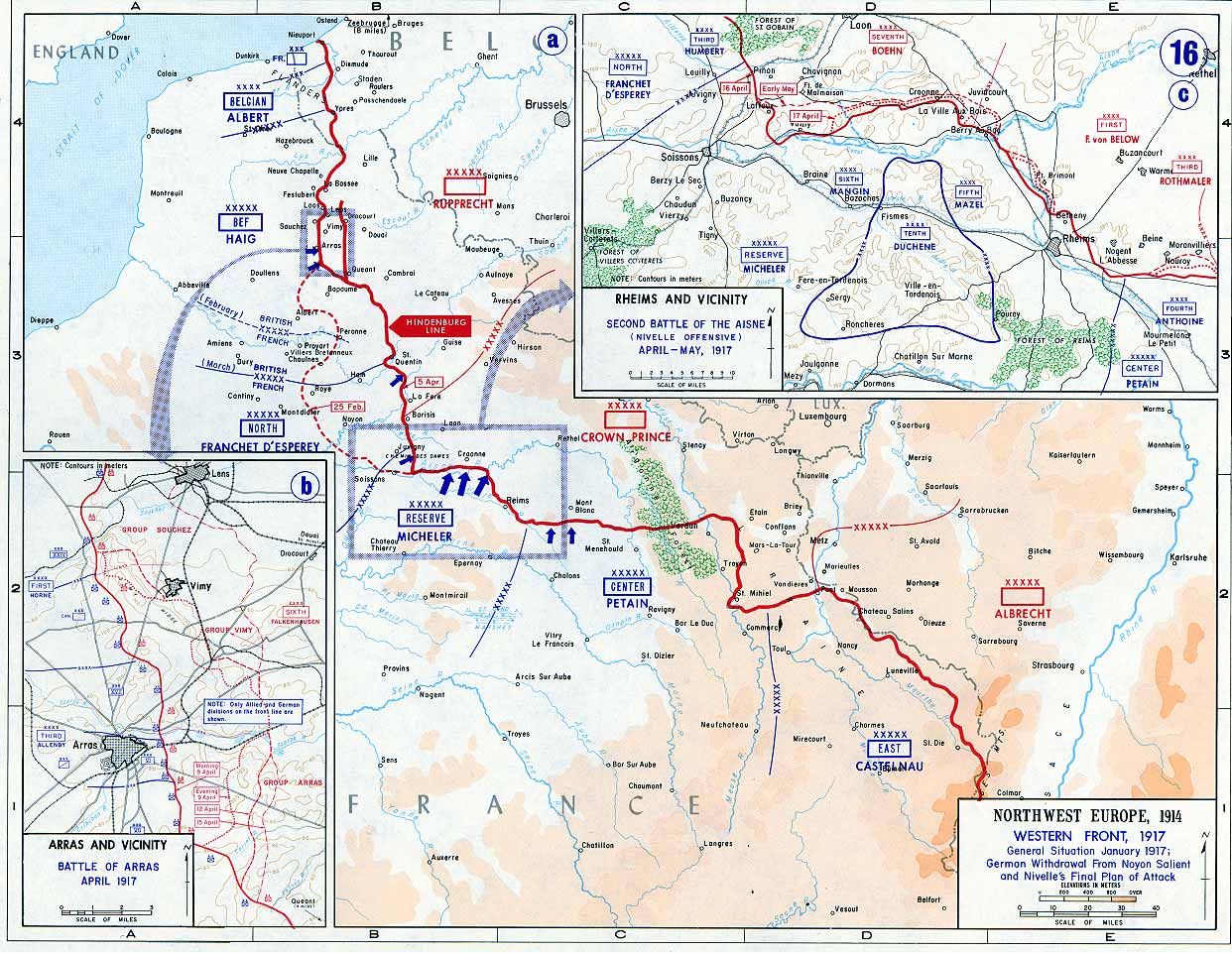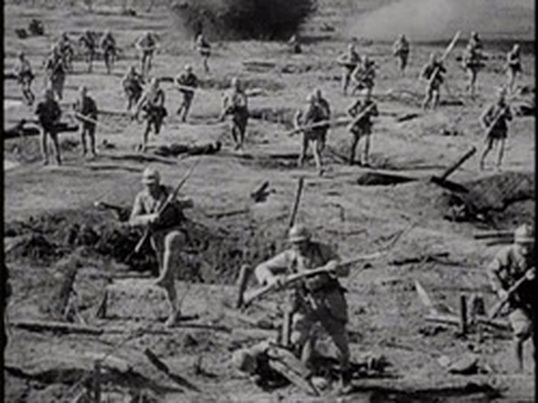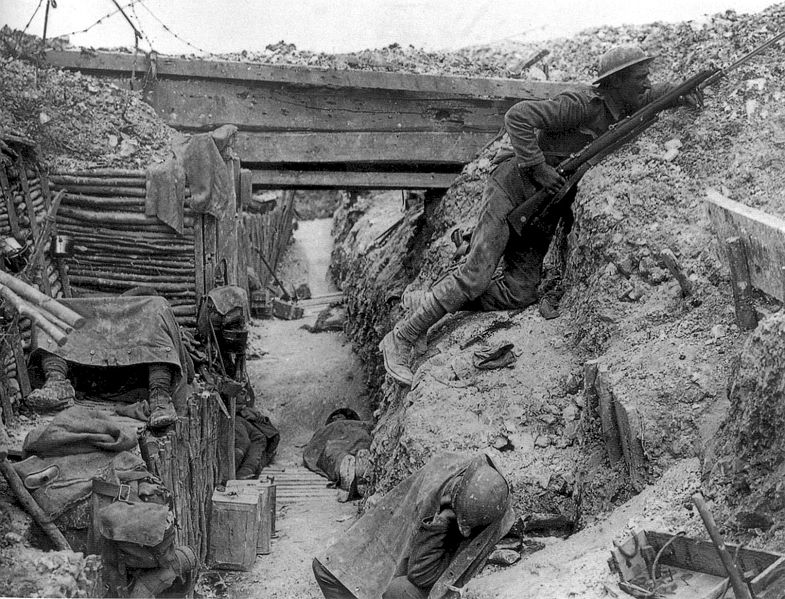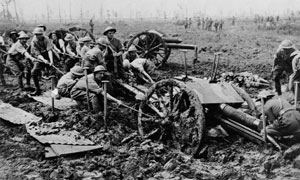Trench Warfare
Trench warfare is warfare in which opposing armed forces go to war in a permanent system of trenches dug into the ground.Trench warfare was resorted to when nations had superior firearms which were not equal advances to those of mobility. Reacting to this, nations were forced to dig into the ground giving up their mobility but gained much more protection from advanced weapons. This system of hiding into dug in trenches lead to long miserable wars in which the defender were able to hold the advantage.
Trenches system consisted of:
- two,three,four,or more trench lines running parallel to each and being at least 1 mile in depth
- trench were in zigzag formation so that an enemy could not fire down the whole trench.
- Food, ammunition, fresh troops, mail, and orders were delivered through these trenches
- The complicated stations included command posts, forward supply dumps,first-aid stations,kitchens,and latrines
- Machine gun emplacements were installed to defend against assaults with huge dugout trenches giving shelter to large numbers of troops against bombings
- There were firing positions along the raised forward step called fire step which were equipped with duckboards to secure footing on the muddy surface
- The front line of trenches known as the outpost line was scattered with soldiers who were distributed behind barbed wire
- The main line of defense were two to four parallel lines of trenches fronted by fields of barbed wire to slow down the mobility of the enemy
- There were also support trenches and reserve trenches were they troops were able to relax, eat, and sleep.


Western Front
Allied troops were able to stop Germany's push through France and Belgium which lasted for the first month of WW1. Both sides expected this conflict to be short and resolved easily but ended up being long and bloody as Germany/Allied forces dug the first trenches on the Western Front on September 15, 1914. The battle along the Western Front brought out the highest development of the trenches during WW1 as the system was used from the winter of 1914 and lasted throughout the spring of 1918. As time passed the trenches stretched from the North sea Coast of Belgium southward through France. All the trenches built in WW1, end to end, stretched about 25.000 miles(12,000 miles occupied by the Allies and the rest by the Central Powers). The trenches came about the first couple months of the war due to the offensives portrayed by Germany and France with the rapid fire of the machine guns. The amount of bullets and shells fired throughout the air pushed the nations into the decision to dig into the soil for shelter and survival.


Cons of Trench Warfare
- Trench Foot
- Rats
- Lice
- lacked bathrooms
- bodies buried in trenches
Work Cited:
Pictures
http://en.wikipedia.org/wiki/Trench_warfare
http://www.ducksters.com/history/world_war_i/trench_warfare.php
http://www.dailymail.co.uk/news/article-2226235/Historian-Andrew-Robertshaw-builds-60ft-long-First-World-War-TRENCH-Surrey-garden-highlight-plight-frontline-Tommies.html
http://photosofwar.net/14649/french-soldiers-wait-in-their-trenches-at-the-western-front-during-the-first-world-war-ca-1916
https://hsiestage5resources2013.wikispaces.com/Trench+Warfare?responseToken=0b6e01434aaad30856cbba5b54dd90f28
http://www.artofanderson.com/world-war-1-western-front-map/
Info
http://www.britannica.com/EBchecked/topic/604210/trench-warfare
http://www.history.com/this-day-in-history/first-trenches-are-dug-on-the-western-front
http://www.historyrocket.com/World-War/world-war-i/trench-warfare/Disadvantages-In-Trench-Warfare.html
















